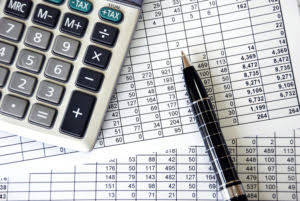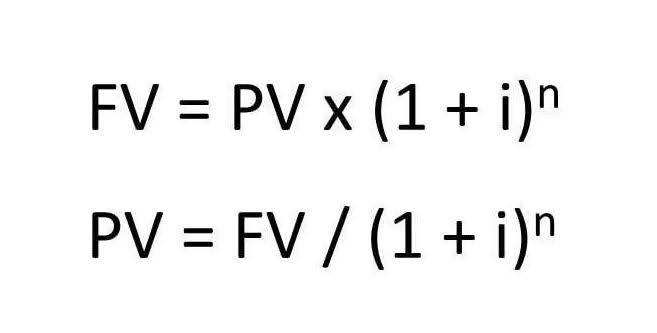7 Advantages Of Contact Center Automation For Customer Service
July 10, 2024Pharmaceuticals Sage X3 Options For Process Manufacturers
August 22, 2024
Depreciation doesn’t correlate with a business’s cash flow, which can make it a confusing concept. Instead, the depreciation calculation is made and entries are recorded into your bookkeeping software on a recurring basis. MACRS or the modified accelerated cost recovery system is a permissible method of depreciation for tax purposes. In the MACRS, the asset’s value is depreciated by using a declining balance over the time period. The term units-of-output depreciation refers to one of several methods of allocating the cost of an asset over its expected lifetime. If we assume that in 2021, a total of 20 million units were produced, we can arrive at the depreciation expense by multiplying our units of production rate by the actual number of units produced.

What are the key variables in the units of production method?
The unit of production method depreciation begins when an asset begins to produce units. It ends when the cost of the unit is fully recovered or the unit has produced all units within its estimated production capacity, whichever comes first. The IRS needs businesses to depreciate their asset with the help of MACRS for tax purposes, however, it allows them to exclude the asset in case they can be calculated accurately by the units of production method. For using this net sales method of units of production, the business owner has to elect to exclude from MACRS within the due date of the return for the tax. Consider, for example, that a given machine has a total capacity for producing 10,00,000 meters cloth during its lifetime.
Financial Accounting
- Often that is its salvage value, meaning what it can be sold for after its owners no longer have a use for it.
- You have to adjust the calculation from one period to the next based on the asset’s usage, meaning you can’t set up an automatically posting depreciation entry in your accounting software.
- Units of production depreciation is one of four types of depreciation you can use for managerial accounting purposes.
- The units-of-production depreciation method assigns an equal amount of depreciation to each unit of product manufactured or service rendered by an asset.
- Notice we don’t change the value of the WidgetMaker 3000 itself; instead, the reduction of the asset’s value is reflected by a negative amount in accumulated depreciation for the asset.
In particular, the units of production method should not be used if usage of the fixed asset varies substantially each period because tracking the utilization of the asset will become a time-consuming task in itself. While more accurate in theory, the units of production method is more tedious and requires closely tracking the usage of the fixed asset. The formula to calculate the depreciation expense under the units of production method is as follows. The opportunity cost for China in production of 1000 units of apparel will be 1 ton of chemicals, and for the U.S. will be 1000 units of apparel will be 2 tons of chemicals.

How Is the Unit of Production Method Useful?
- When the equipment is also less production, lower depreciation deductions can be claimed.
- The unit of production method is a method of calculating the depreciation of the value of an asset over time.
- MACRS or the modified accelerated cost recovery system is a permissible method of depreciation for tax purposes.
- Now, the accumulated depreciation totals $20,000, bringing the net book value down to $22,000.
- Using the straight-line depreciation method, it’s assumed that it loses the same amount of value each year, so it’s considered to lose $180,000 in value each year.
In the current accounting period, the generator ran for approximately 300 hours. The unit of production method is a method of calculating the depreciation of the value of an asset over time. In effect, the depreciation expense recorded each year directly reflects how much of the fixed asset was used. Overall, the concept of the unit of production provides a fundamental framework for tracking and evaluating production activities, enabling businesses to optimize their operations and make informed business decisions. We’ve written a complete guide on depreciation that goes into these different types of depreciation in detail. For now, just be units of production or units of output are alternative terms for the aware that there are several different ways you can calculate depreciation in your business for management purposes and a completely different set of rules your tax professional will follow for your tax return.
More Questions In Finance
If a country is open to international trade, the domestic price of a product can differ from the international price of that product. My Accounting Course is a world-class educational resource developed by experts to simplify accounting, finance, & investment analysis topics, so students and professionals can learn and propel their careers. At the end of useful life, an entry would be https://www.bookstime.com/articles/toa-global passed after selling machinery at $12,000. Get instant access to video lessons taught by experienced investment bankers. Learn financial statement modeling, DCF, M&A, LBO, Comps and Excel shortcuts. You can change your settings at any time, including withdrawing your consent, by using the toggles on the Cookie Policy, or by clicking on the manage consent button at the bottom of the screen.
How is the Unit of Production Method of Depreciation Used?

Depreciation expense for a given year is calculated by dividing the original cost of the equipment less its salvage value, by the expected number of units the asset should produce given its useful life. Then, multiply that quotient by the number of units (U) used during the current year. The method becomes useful when an asset’s value is more closely related to the number of units it produces than to the number of years it is in use. This method often results in greater deductions being taken for depreciation in years when the asset is heavily used, which can then offset periods when the equipment experiences less use. Under the Units of Production Method, the depreciation expense incurred by a company is contingent on the actual usage of the fixed assets. A unit of production refers to the smallest measure of output or product that is produced within a given period of time.
California State University, Northridge notes that different depreciation methods, including the MACRS and double-declining balance, make more sense for different assets and tax purposes, depending on IRS rules. For example, a factory robot is more likely to experience wear and tear as it produces hubcaps than a piece of software as it produces spreadsheets. Unlike other depreciation methods, units of production depreciation—or units of activity depreciation, as it’s sometimes called—is not calculated based on the amount of time an asset is in service. Instead, units of production depreciation is calculated based on the use of the asset. The Unit of Production Method is a depreciation method that measures the depreciation of an asset based on its usage and not just passage of time.
Example Of Unit Of Production Method
Greater deductions are often taken for depreciation in years when the asset is heavily used, which offsets periods when the equipment experiences less use. The straight-line method and unit of production method are two ways to compute how a fixed asset depreciates, or loses value, over a period of time. One of the beauties of the units of production depreciation method is you can calculate depreciation with as much detail as you desire. Many businesses will still calculate depreciation on a yearly basis, but you might choose to calculate depreciation quarterly or even monthly. This can be helpful if you are trying to determine your costs with a high degree of accuracy. It is usually calculated based on a period of time, but it can also be calculated based on usage over a period of time.

